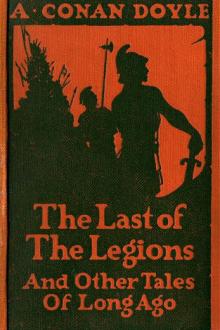Salammbo, Gustave Flaubert [feel good books txt] 📗

- Author: Gustave Flaubert
Book online «Salammbo, Gustave Flaubert [feel good books txt] 📗». Author Gustave Flaubert
The isthmus was now hidden by men; and this long surface, whereon the tents were like huts amid an inundation, stretched as far as the first lines of the other Barbarians, which were streaming with steel and were posted symmetrically upon both sides of the aqueduct.
The Carthaginians had not recovered from the terror caused by their arrival when they perceived the siege-engines sent by the Tyrian towns coming straight towards them like monsters and like buildings—with their masts, arms, ropes, articulations, capitals and carapaces, sixty carroballistas, eighty onagers, thirty scorpions, fifty tollenos, twelve rams, and three gigantic catapults which hurled pieces of rock of the weight of fifteen talents. Masses of men clinging to their bases pushed them on; at every step a quivering shook them, and in this way they arrived in front of the walls.
But several days were still needed to finish the preparations for the siege. The Mercenaries, taught by their defeats, would not risk themselves in useless engagements; and on both sides there was no haste, for it was well known that a terrible action was about to open, and that the result of it would be complete victory or complete extermination.
Carthage might hold out for a long time; her broad walls presented a series of re-entrant and projecting angles, an advantageous arrangement for repelling assaults.
Nevertheless a portion had fallen down in the direction of the Catacombs, and on dark nights lights could be seen in the dens of Malqua through the disjointed blocks. These in some places overlooked the top of the ramparts. It was here that the Mercenaries’ wives, who had been driven away by Matho, were living with their new husbands. On seeing the men again their hearts could stand it no longer. They waved their scarfs at a distance; then they came and chatted in the darkness with the soldiers through the cleft in the wall, and one morning the Great Council learned that they had all fled. Some had passed through between the stones; others with greater intrepidity had let themselves down with ropes.
At last Spendius resolved to accomplish his design.
The war, by keeping him at a distance, had hitherto prevented him; and since the return to before Carthage, it seemed to him that the inhabitants suspected his enterprise. But soon they diminished the sentries on the aqueduct. There were not too many people for the defence of the walls.
The former slave practised himself for some days in shooting arrows at the flamingoes on the lake. Then one moonlight evening he begged Matho to light a great fire of straw in the middle of the night, while all his men were to shout at the same time; and taking Zarxas with him, he went away along the edge of the gulf in the direction of Tunis.
When on a level with the last arches they returned straight towards the aqueduct; the place was unprotected: they crawled to the base of the pillars.
The sentries on the platform were walking quietly up and down.
Towering flames appeared; clarions rang; and the soldiers on vedette, believing that there was an assault, rushed away in the direction of Carthage.
One man had remained. He showed black against the background of the sky. The moon was shining behind him, and his shadow, which was of extravagant size, looked in the distance like an obelisk proceeding across the plain.
They waited until he was in position just before them. Zarxas seized his sling, but whether from prudence or from ferocity Spendius stopped him. “No, the whiz of the bullet would make a noise! Let me!”
Then he bent his bow with all his strength, resting the lower end of it against the great toe of his left foot; he took aim, and the arrow went off.
The man did not fall. He disappeared.
“If he were wounded we should hear him!” said Spendius; and he mounted quickly from story to story as he had done the first time, with the assistance of a rope and a harpoon. Then when he had reached the top and was beside the corpse, he let it fall again. The Balearian fastened a pick and a mallet to it and turned back.
The trumpets sounded no longer. All was now quiet. Spendius had raised one of the flag-stones and, entering the water, had closed it behind him.
Calculating the distance by the number of his steps, he arrived at the exact spot where he had noticed an oblique fissure; and for three hours until morning he worked in continuous and furious fashion, breathing with difficulty through the interstices in the upper flag-tones, assailed with anguish, and twenty times believing that he was going to die. At last a crack was heard, and a huge stone ricocheting on the lower arches rolled to the ground,—and suddenly a cataract, an entire river, fell from the skies onto the plain. The aqueduct, being cut through in the centre, was emptying itself. It was death to Carthage and victory for the Barbarians.
In an instant the awakened Carthaginians appeared on the walls, the houses, and the temples. The Barbarians pressed forward with shouts. They danced in delirium around the great waterfall, and came up and wet their heads in it in the extravagance of their joy.
A man in a torn, brown tunic was perceived on the summit of the aqueduct. He stood leaning over the very edge with both hands on his hips, and was looking down below him as though astonished at his work.
Then he drew himself up. He surveyed the horizon with a haughty air which seemed to say: “All that is now mine!” The applause of the Barbarians burst forth, while the Carthaginians, comprehending their disaster at last, shrieked with despair. Then he began to run about the platform from one end to the other,—and like a chariot-driver triumphant at the Olympic Games, Spendius, distraught with pride, raised his arms aloft.
The Barbarians had no need of a circumvallation on the side of Africa, for it was theirs. But to facilitate the approach to the walls, the entrenchments bordering the ditch were thrown down. Matho next divided the army into great semicircles so as to encompass Carthage the better. The hoplites of the Mercenaries were placed in the first rank, and behind them the slingers and horsemen; quite at the back were the baggage, chariots, and horses; and the engines bristled in front of this throng at a distance of three hundred paces from the towers.
Amid the infinite variety of their nomenclature (which changed several times in the course of the centuries) these machines might be reduced to two systems: some acted like slings, and the rest like bows.
The first, which were the catapults, was composed of a square frame with two vertical uprights and a horizontal bar. In its anterior portion was a cylinder, furnished with cables, which held back a great beam bearing a spoon for the reception of projectiles; its base was caught in a skein of twisted thread, and when the ropes were let go it sprang up and struck against the bar, which, checking it with a shock, multiplied its power.





Comments (0)